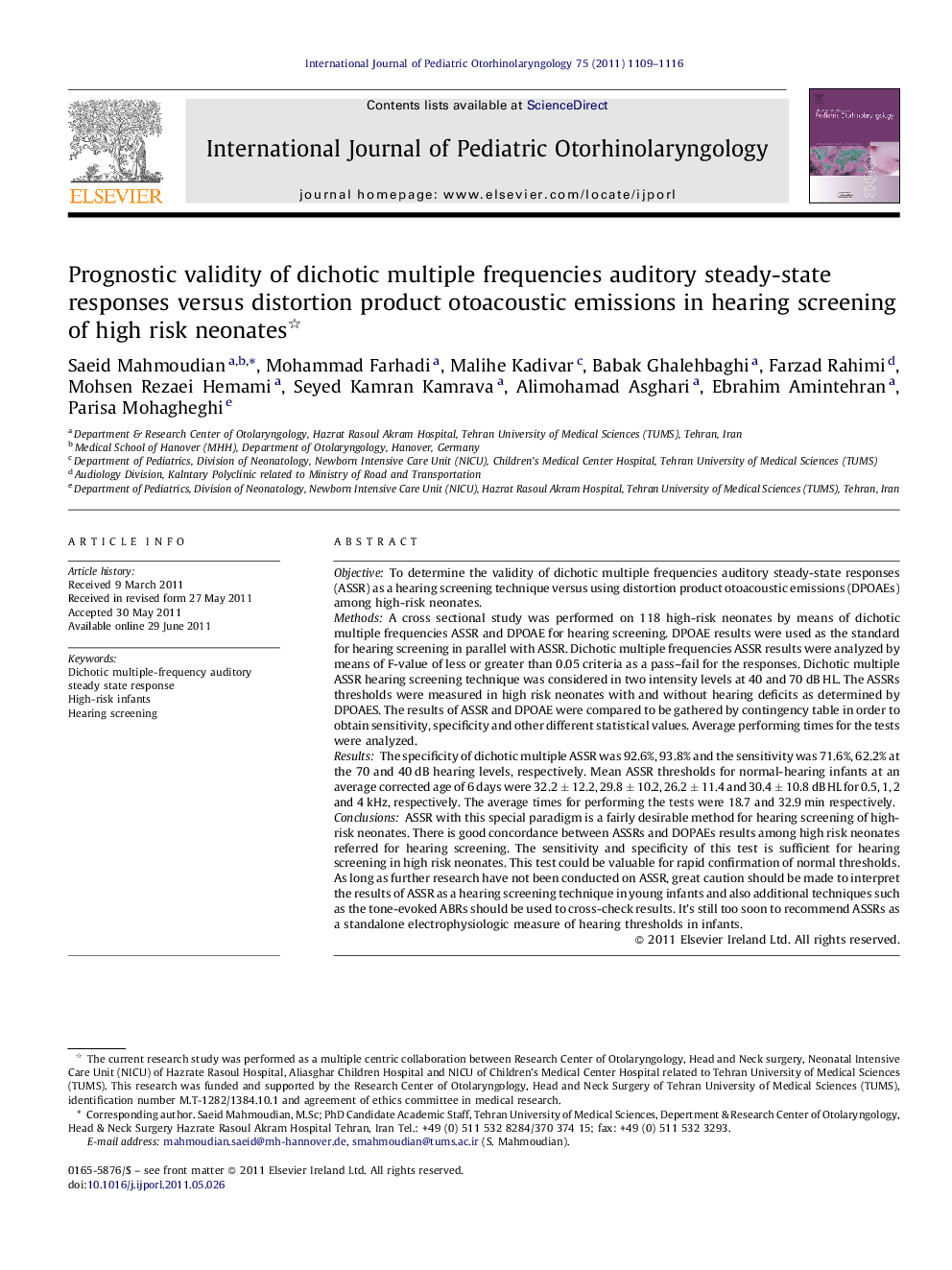| کد مقاله | کد نشریه | سال انتشار | مقاله انگلیسی | نسخه تمام متن |
|---|---|---|---|---|
| 4113577 | 1606041 | 2011 | 8 صفحه PDF | دانلود رایگان |

ObjectiveTo determine the validity of dichotic multiple frequencies auditory steady-state responses (ASSR) as a hearing screening technique versus using distortion product otoacoustic emissions (DPOAEs) among high-risk neonates.MethodsA cross sectional study was performed on 118 high-risk neonates by means of dichotic multiple frequencies ASSR and DPOAE for hearing screening. DPOAE results were used as the standard for hearing screening in parallel with ASSR. Dichotic multiple frequencies ASSR results were analyzed by means of F-value of less or greater than 0.05 criteria as a pass–fail for the responses. Dichotic multiple ASSR hearing screening technique was considered in two intensity levels at 40 and 70 dB HL. The ASSRs thresholds were measured in high risk neonates with and without hearing deficits as determined by DPOAES. The results of ASSR and DPOAE were compared to be gathered by contingency table in order to obtain sensitivity, specificity and other different statistical values. Average performing times for the tests were analyzed.ResultsThe specificity of dichotic multiple ASSR was 92.6%, 93.8% and the sensitivity was 71.6%, 62.2% at the 70 and 40 dB hearing levels, respectively. Mean ASSR thresholds for normal-hearing infants at an average corrected age of 6 days were 32.2 ± 12.2, 29.8 ± 10.2, 26.2 ± 11.4 and 30.4 ± 10.8 dB HL for 0.5, 1, 2 and 4 kHz, respectively. The average times for performing the tests were 18.7 and 32.9 min respectively.ConclusionsASSR with this special paradigm is a fairly desirable method for hearing screening of high-risk neonates. There is good concordance between ASSRs and DOPAEs results among high risk neonates referred for hearing screening. The sensitivity and specificity of this test is sufficient for hearing screening in high risk neonates. This test could be valuable for rapid confirmation of normal thresholds. As long as further research have not been conducted on ASSR, great caution should be made to interpret the results of ASSR as a hearing screening technique in young infants and also additional techniques such as the tone-evoked ABRs should be used to cross-check results. It's still too soon to recommend ASSRs as a standalone electrophysiologic measure of hearing thresholds in infants.
Journal: International Journal of Pediatric Otorhinolaryngology - Volume 75, Issue 9, September 2011, Pages 1109–1116